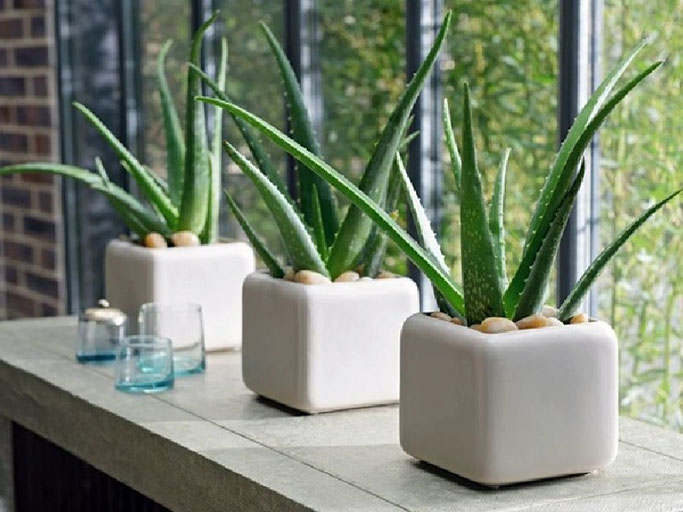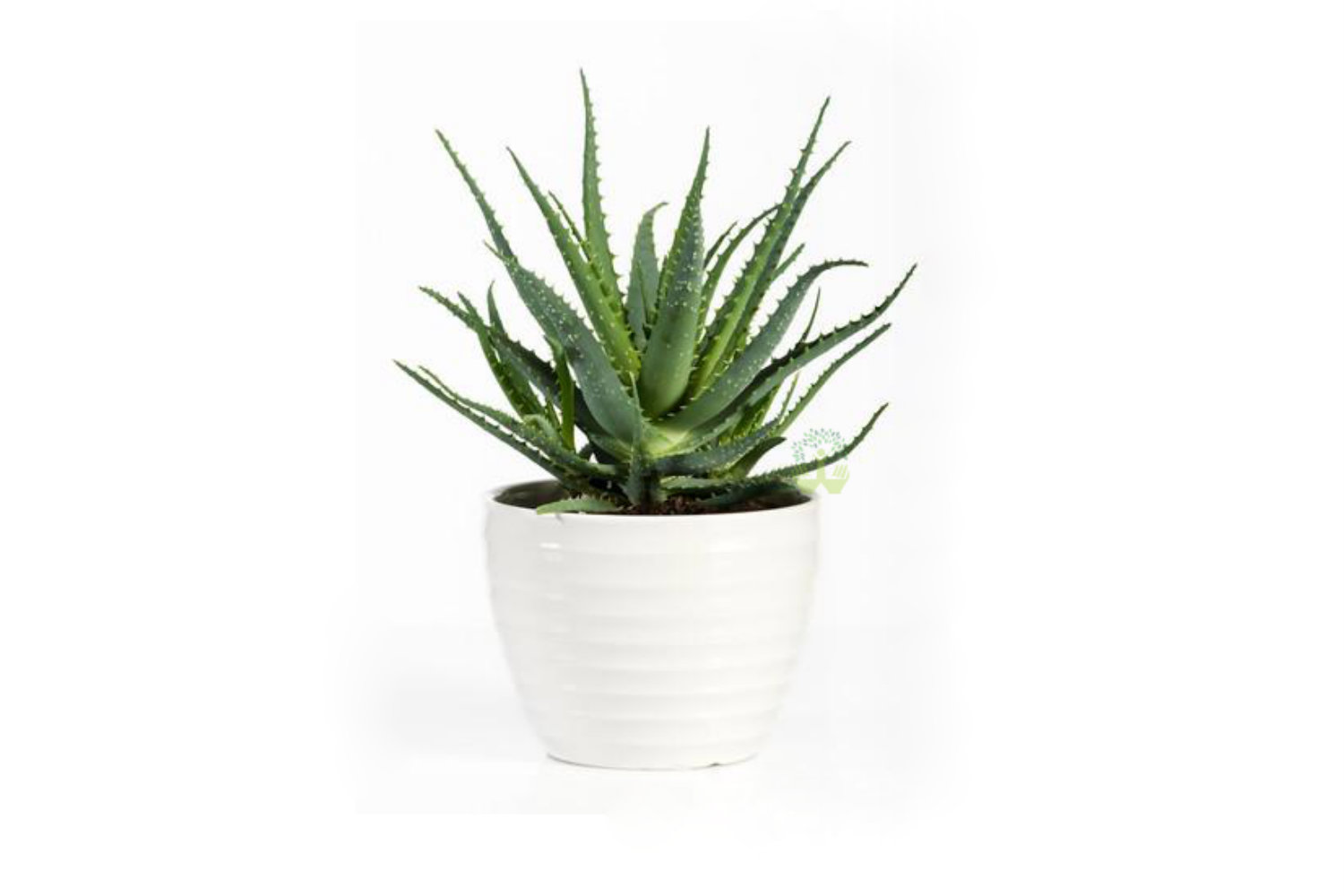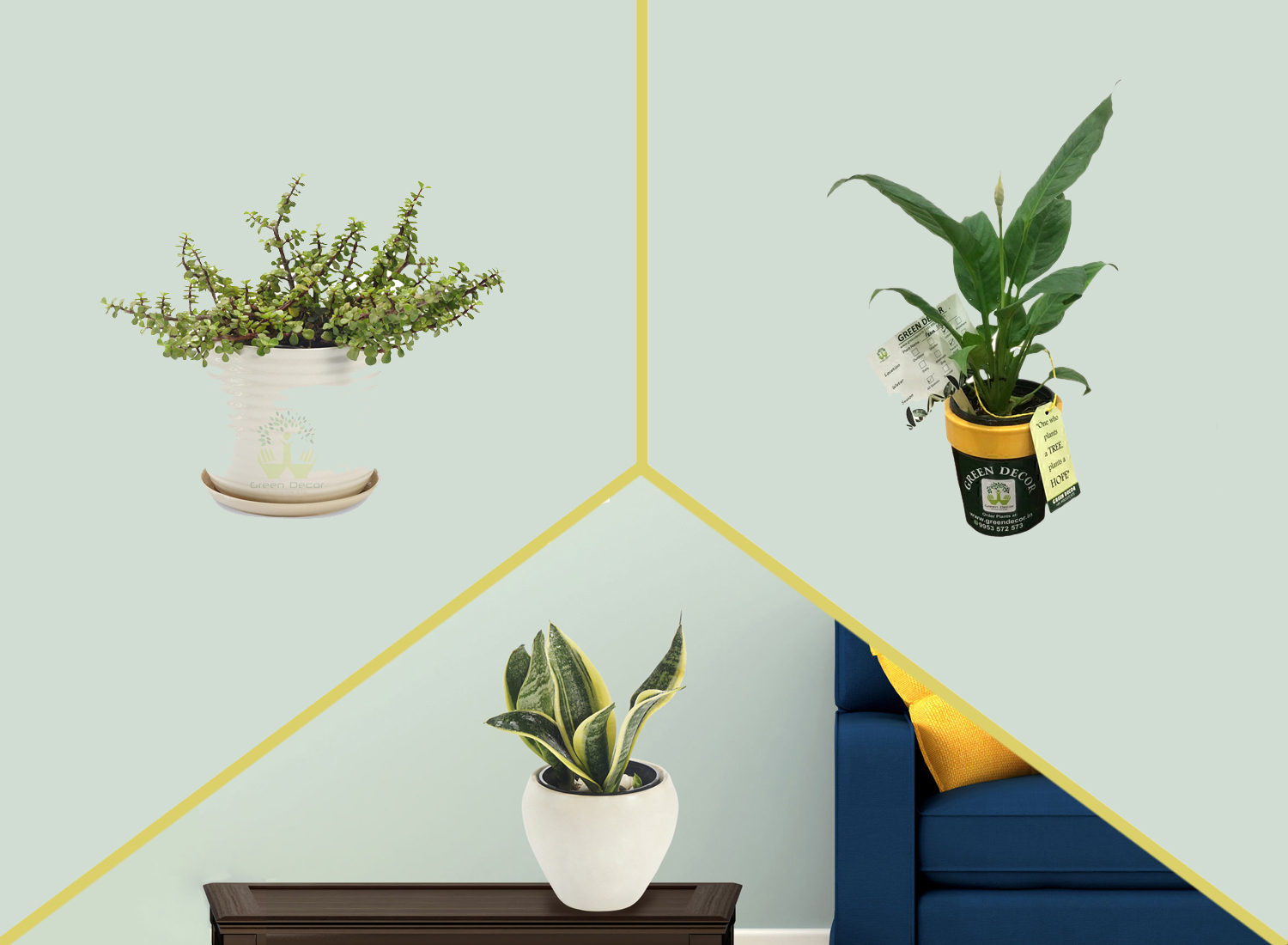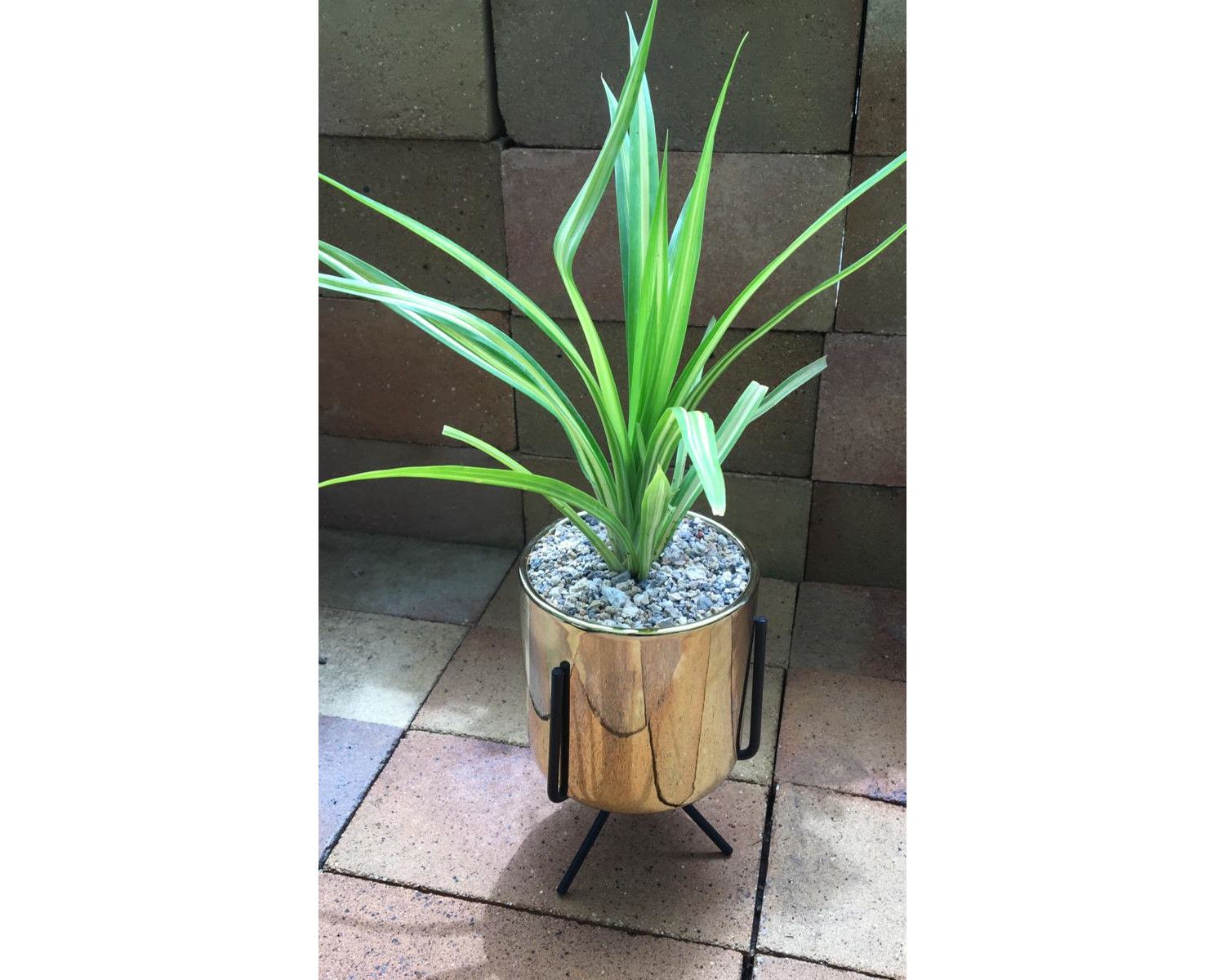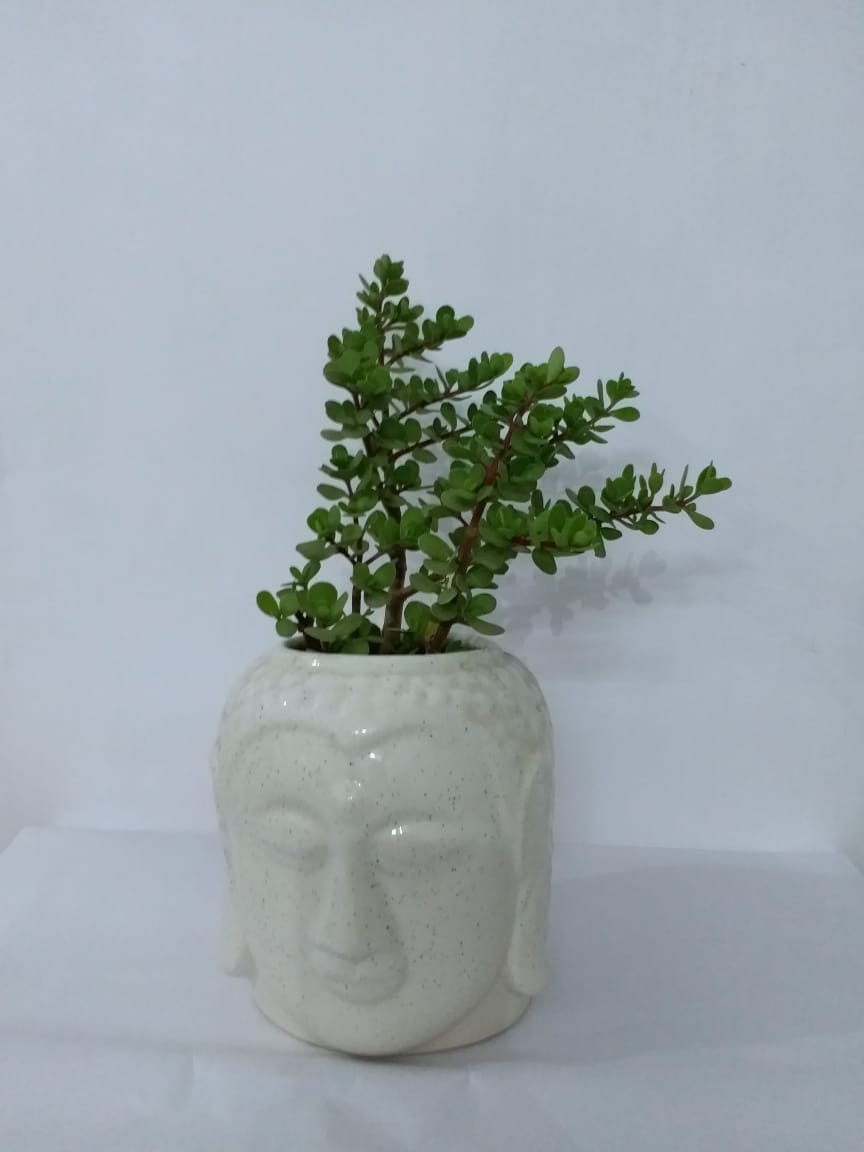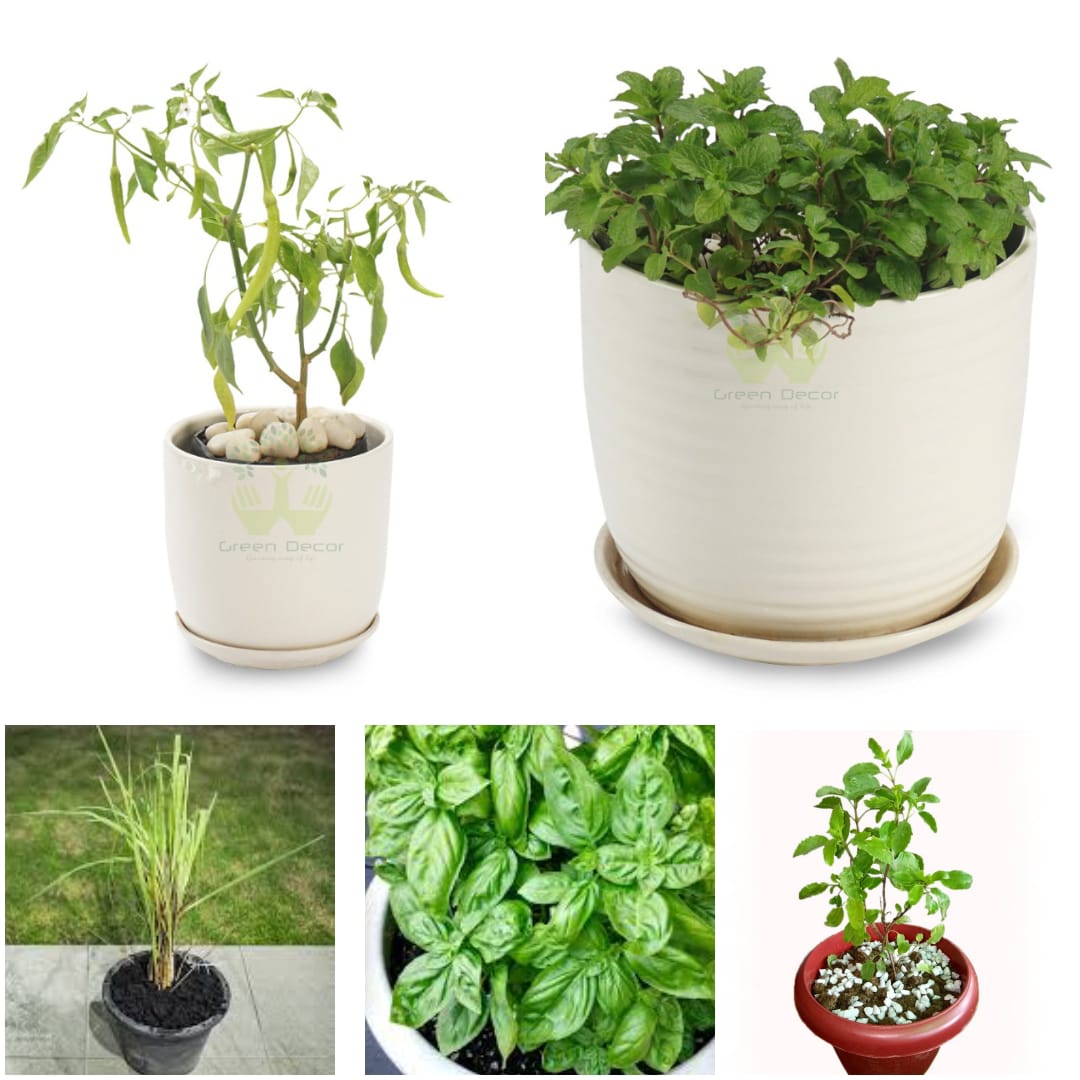Aloe Vera
220
Maintenance Level
Low
Placements
Outdoor-Shades or Indoor
Toxic
YES
Fragrance
None
Seasons
All Weather
Plant Height
6" to 30"
Water Frequency
Winter
Weekly
Summer
Twice Week
Fertilizer Frequency
Winter
3-4 Month
Summer
1-2 Month
- About Aloe Vera
- How To Grow Aloe Vera
- Benefits of Aloe Vera
- Maintenance Tips
- Shipping Info
The aloe vera plant is about one or two feet tall with prickly and bitter leaves, which act as a defence to keep animals and insects from feeding on the plant. The leaves hold a gooey translucent gel, also extremely bitter, and known all over the world for it's unbelievable healing properties. This translucent gel is made up of around 96% water, some organic and inorganic compounds, a type of protein which contains 18 of the 20 amino acids found in the body and lastly, Vitamin A, B, C and E. Another part of the aloe vera plant which is used is the 'sap', a yellow-coloured liquid stuck to the skin of the plant from the inside. When dried and purified, the powdered aloe is often used as a laxative.
Soil Need
Clay Sand Mix,Peatmose + Vermiculite + Perlite,Cocopeat+Compost+Perlite
Fertilizer (type)
Liquid Fertliser, All Purpose Fertiliser
Growth Pattern
Moderate
Pruning
3-4 Month
Re-Potting
Every 3-4 Month
Process :
1. Give your aloe plenty of water. Then, allow it to drain properly. Proper watering protects your aloe’s roots from chemical burns from the fertilizer.
2. Unusually for a succulent, the aloe plant cannot be grown from a leaf cutting, and instead is typically propagated by detaching younger clone plants from the base of the adult plant or from the joint root system.
3. These young plants must be treated carefully, aloe plants have relatively short roots and heavy leaves, so they are commonly moved to a heavier pot when they become top-heavy and tip over.
4. If Aloe vera runs out of space for its roots to grow, it may start to produce "pups" that can be moved to their own pot or in the plant growing than producing new plants, transplant it to a larger pot before the roots begin to circle the walls of its container
1. Antiviral and Antibacterial Properties
2. Aloe vera can Improve the Effectiveness of your Diet and Maximise your Weight-Loss Potential
3. Aloe vera however, is also a great plant to improve air quality. one of the best air purifier recommended by NASA.
Do's
1. Mix traditional potting soil with coarse sand.
2. Aloe Vera has variegated leaves that flow out from its center base. Aloe can be kept in a pot in the kitchen near a window for every day use.
Don'ts
1. Aloes are not in need of much nutrients to live If you frequently and heavily fertilize your plant, you will actually be doing more harm than good. Instead, keep your aloe of the opposite fertilizing schedule: fertilize lightly and infrequently.
2. Aloe Vera plants do not need to be fertilized from the end of the summer until fall.
3. Make sure water does not stay in the soil.
